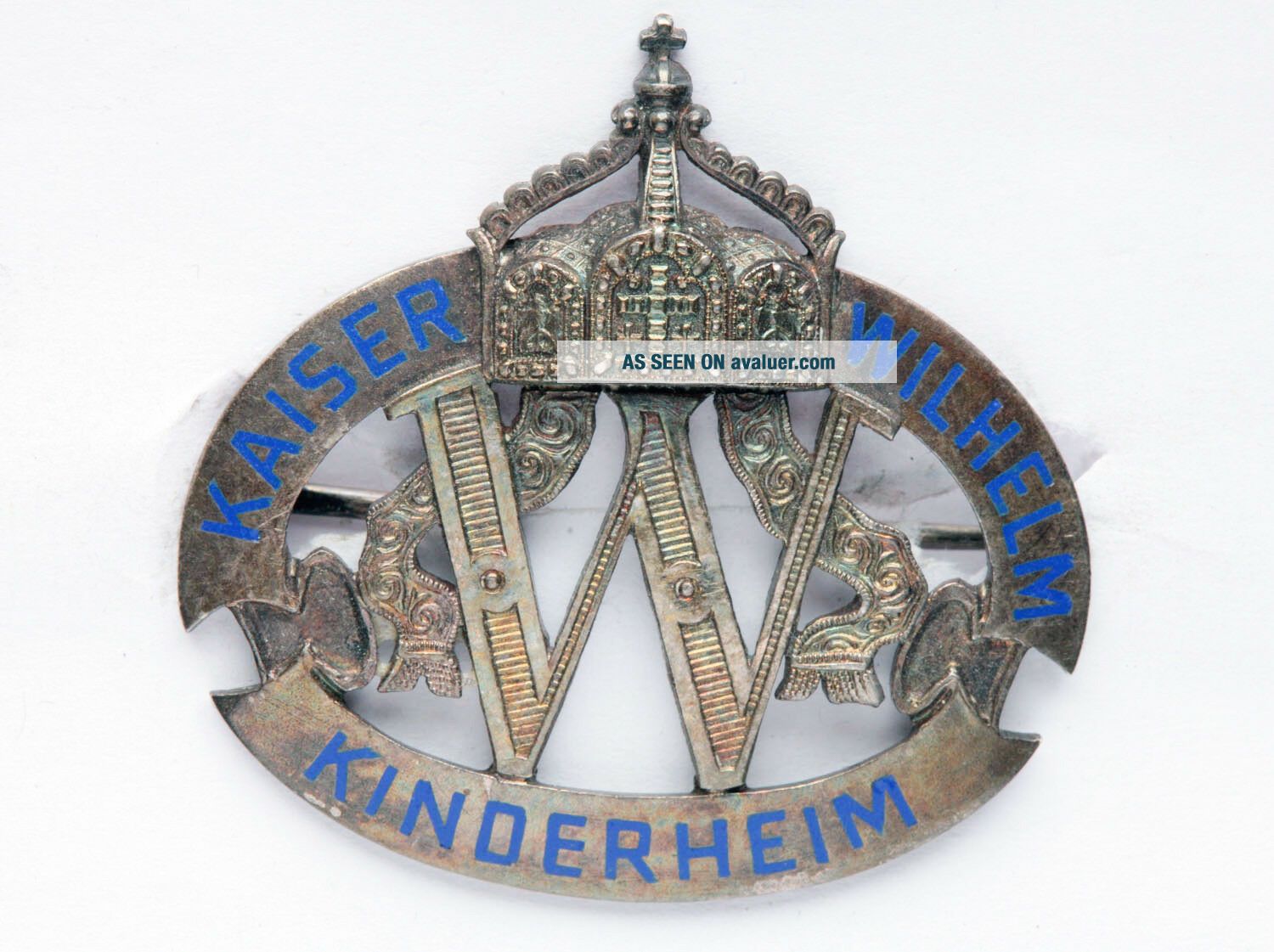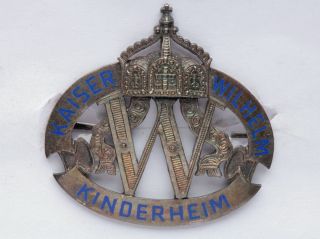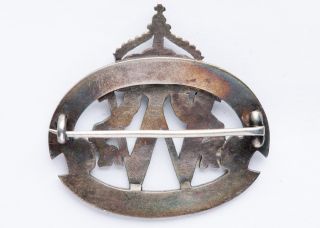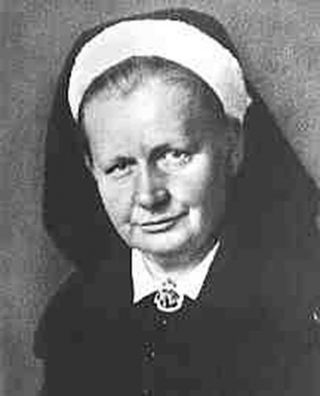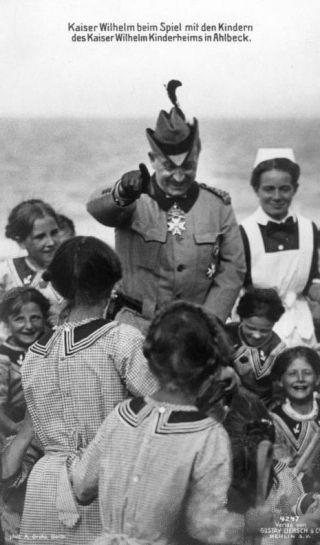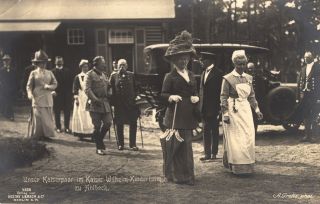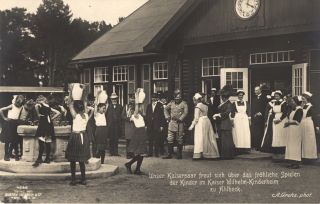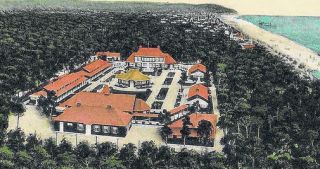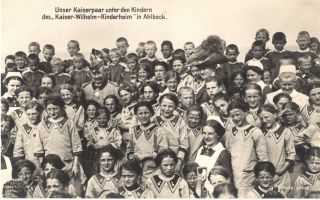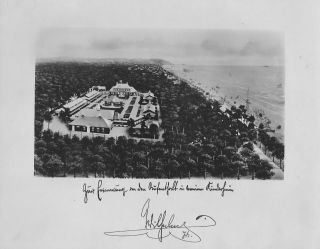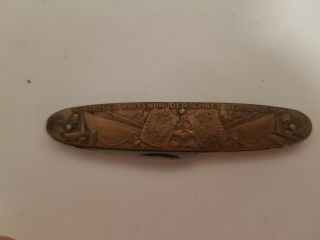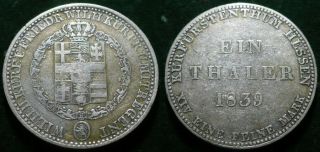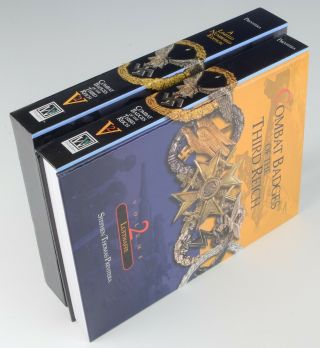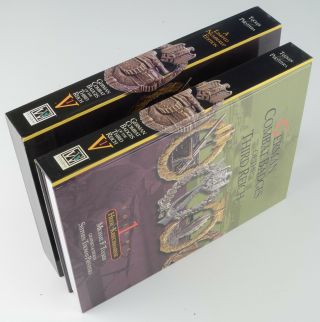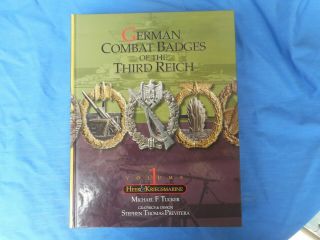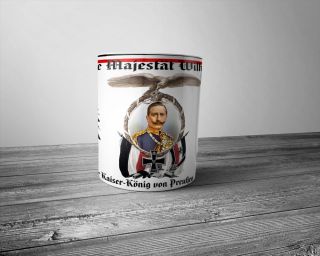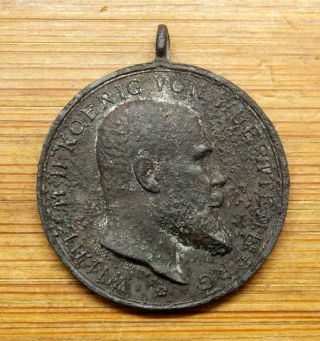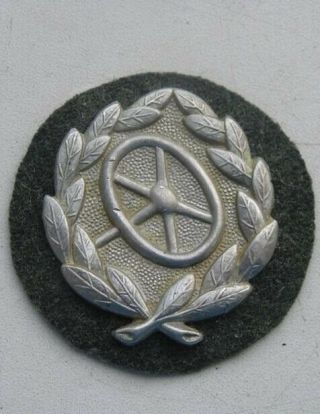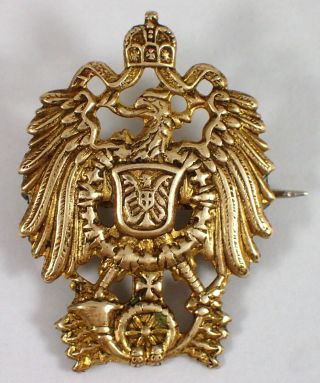Rare German Honorary Badge Of Wilhelm II Childs - Home_Wilhelm II Kinderheim
Item History & Price
| Reference Number: Avaluer:336805 | Country/Region of Manufacture: Germany |
Rare German Honorary Badge of Kaiser Wilhelm II Childs-Home. Ehrenabzeichen des Kaiser Wilhelm Kinderheim Ahlbeck.
Badge - silver, partially enamelled, multiple parts construction. Very fine details and excellent quality, old patina, slightly worn, in extremely fine condition and very rare.
The Kaiser-Wilhelm-Kinderheim -KWK(the Home for homeless children, mostly for children of working class famili...es and from deprived circumstances) was a summer resort on the Baltic, on the beach of Usedom Sea-Bath Ahlbeck. It was founded by the Emperors Couple in May 1913 and could take up to 900 children.
During both World Wars Kaiser-Wilhelm-Kinderheim was used as a military hospital.
The Honorary badges were officially ordered by the Emperors Cabinett at the workshop of Sy & Wagner and personally handed over to the KWK sisters.
Only a Badge is for sale. Other photos are for information only. We are not responsible for any import duties, taxes and charges.
Kaiser Wilhelm Children's Home and Sonnendorf Ahlbeck In the 'century of the child' Wilhelm II decided to set up his own children's home 'for poor Berlin children' under his name. He found a suitable site on the Baltic Sea beach, in Ahlbeck on the island of Usedom.
He was looking for a responsible leader and came to Mathilde Kirschner, the daughter of the Lord Mayor. On the hospital founded by her father in Berlin-Buch, she had set up a 'toddler school' - this was the name of the first kindergartens that had inspired the emperor. Thus, the request to the young woman to take over the management of his' children's home in Ahlbeck. Mathilde Kirschner combined her commitment with the desire to have her own property in Ahlbeck for a dependance of her Moabiter residence. The emperor agreed. He called Mathilde Kirschner to the head of the Sisterhood of the Kaiser Wilhelm Children's Home founded by him and gave her the Honorary Badge in gold with his monogram.
To the sun village belonged 10 wooden houses on stone foundations with up to 100 beds for factory workers or family-like residential communities. The houses bore names like Sonnenheim, Schneewitchen or Rautendelein. A cooking and household school "Quelle" created after the Moabiter model had 24 training places and operated a public event center.
The emperor had demanded wooden buildings of Scandinavian design without stairs and with many windows for light, air and sun. The Ahlbeck site was located in the forest parallel to the dune belt of the Baltic Sea. A private beach section for the children's home was rented. On Pentecost Sunday, May 26, 1912, Wilhelm II approved the blueprints in the Berlin Palace - the birth of the children's home. A model of the planned ensemble was exhibited in Berlin in 1913 for the 25th anniversary of the reign of the emperor.
The girls and boys in Berlin expected unprecedented luxury: each child had their own bed, a stool, a place in the washrooms and their own lockable cupboard. The interiors of the houses had different colors, which found themselves on the home clothes of boys and girls, on linen, hats and sun hats of the children up to the slippers. In the play pavilion there was a small box for handicrafts, self-collected stones, shells and amber finds for each child. Individually painted floral, animal or bird motifs for the children replaced a numbering. The colorfully colored picture of the children complemented the blue and light blue and white dresses of the nurses as well as the plain service dresses of the interns, the kitchen staff and the helpers.
For the trainees, the matron had come up with something new: middle-aged female middle-class students were able to apply for a 6 or 12-month voluntary recovery and service year in Ahlbeck at their own expense after leaving school. This was to build bridges to the children from 'lower' strata. The community of Ahlbeck also benefited from the superior of the Emperor, at the suggestion of Mathilde Kirschner was the first crèche of the place.
Inauguration of the children's home on 3 June 1913
The children's home was inaugurated on 3 June 1913 by Emperor Wilhelm II and Empress Auguste Viktoria. 150 Berlin children had traveled 14 days before by train. It was imperial weather: the brown-green wooden buildings with the red roofs and the courtyard with its arcades, rose beds and white ornamental arches shone in the sunlight. On the house of the matron - the only one of stone - the imperial flag blew, and a pair of storks who arrived on time nested on the thatch of the pavilion. The children's home and all the streets and houses of Ahlbeck were festively decorated. The press reported in detail.
Postcard series showed the imperial couple with the children in the home, while playing and on the beach. A film shot on home life and the opening was premiered eight months later in the Kammerlichtspiele on Potsdamer Platz in Berlin, a piece of film history. 1, 200 guests took part in the matinee, which included a cultural program. Crown Princess Cecilie and representatives of the court had also appeared. A few days before, a large part of the Ahlbeck children from 1913 had gathered in the banquet hall of the Moabiter home to celebrate their reunion. On January 27, 1914, they personally delivered their birthday wishes to the emperor. The picture she shows with the Emperor and his six sons on the Berlin Palace Bridge is one of the most famous photos of the imperial era. Wilhelm II visited his home several times and spent the night there in the 'Kaiserzimmer', which still exists today.
Wartime 1914 - 1918
After the outbreak of the First World War on 1 August 1914, the operation of the children's home was continued unrestricted. Outside the occupancy times wounded soldiers were taken by order of the emperor and cared for by the sisters. In addition to the poor children, 565 children at risk of ill-health from schools in Berlin came to Ahlbeck during the years of hunger.
The KWK sisters were used during the World War in other children's homes and social institutions.
Badge - silver, partially enamelled, multiple parts construction. Very fine details and excellent quality, old patina, slightly worn, in extremely fine condition and very rare.
The Kaiser-Wilhelm-Kinderheim -KWK(the Home for homeless children, mostly for children of working class famili...es and from deprived circumstances) was a summer resort on the Baltic, on the beach of Usedom Sea-Bath Ahlbeck. It was founded by the Emperors Couple in May 1913 and could take up to 900 children.
During both World Wars Kaiser-Wilhelm-Kinderheim was used as a military hospital.
The Honorary badges were officially ordered by the Emperors Cabinett at the workshop of Sy & Wagner and personally handed over to the KWK sisters.
Only a Badge is for sale. Other photos are for information only. We are not responsible for any import duties, taxes and charges.
Kaiser Wilhelm Children's Home and Sonnendorf Ahlbeck In the 'century of the child' Wilhelm II decided to set up his own children's home 'for poor Berlin children' under his name. He found a suitable site on the Baltic Sea beach, in Ahlbeck on the island of Usedom.
He was looking for a responsible leader and came to Mathilde Kirschner, the daughter of the Lord Mayor. On the hospital founded by her father in Berlin-Buch, she had set up a 'toddler school' - this was the name of the first kindergartens that had inspired the emperor. Thus, the request to the young woman to take over the management of his' children's home in Ahlbeck. Mathilde Kirschner combined her commitment with the desire to have her own property in Ahlbeck for a dependance of her Moabiter residence. The emperor agreed. He called Mathilde Kirschner to the head of the Sisterhood of the Kaiser Wilhelm Children's Home founded by him and gave her the Honorary Badge in gold with his monogram.
To the sun village belonged 10 wooden houses on stone foundations with up to 100 beds for factory workers or family-like residential communities. The houses bore names like Sonnenheim, Schneewitchen or Rautendelein. A cooking and household school "Quelle" created after the Moabiter model had 24 training places and operated a public event center.
The emperor had demanded wooden buildings of Scandinavian design without stairs and with many windows for light, air and sun. The Ahlbeck site was located in the forest parallel to the dune belt of the Baltic Sea. A private beach section for the children's home was rented. On Pentecost Sunday, May 26, 1912, Wilhelm II approved the blueprints in the Berlin Palace - the birth of the children's home. A model of the planned ensemble was exhibited in Berlin in 1913 for the 25th anniversary of the reign of the emperor.
The girls and boys in Berlin expected unprecedented luxury: each child had their own bed, a stool, a place in the washrooms and their own lockable cupboard. The interiors of the houses had different colors, which found themselves on the home clothes of boys and girls, on linen, hats and sun hats of the children up to the slippers. In the play pavilion there was a small box for handicrafts, self-collected stones, shells and amber finds for each child. Individually painted floral, animal or bird motifs for the children replaced a numbering. The colorfully colored picture of the children complemented the blue and light blue and white dresses of the nurses as well as the plain service dresses of the interns, the kitchen staff and the helpers.
For the trainees, the matron had come up with something new: middle-aged female middle-class students were able to apply for a 6 or 12-month voluntary recovery and service year in Ahlbeck at their own expense after leaving school. This was to build bridges to the children from 'lower' strata. The community of Ahlbeck also benefited from the superior of the Emperor, at the suggestion of Mathilde Kirschner was the first crèche of the place.
Inauguration of the children's home on 3 June 1913
The children's home was inaugurated on 3 June 1913 by Emperor Wilhelm II and Empress Auguste Viktoria. 150 Berlin children had traveled 14 days before by train. It was imperial weather: the brown-green wooden buildings with the red roofs and the courtyard with its arcades, rose beds and white ornamental arches shone in the sunlight. On the house of the matron - the only one of stone - the imperial flag blew, and a pair of storks who arrived on time nested on the thatch of the pavilion. The children's home and all the streets and houses of Ahlbeck were festively decorated. The press reported in detail.
Postcard series showed the imperial couple with the children in the home, while playing and on the beach. A film shot on home life and the opening was premiered eight months later in the Kammerlichtspiele on Potsdamer Platz in Berlin, a piece of film history. 1, 200 guests took part in the matinee, which included a cultural program. Crown Princess Cecilie and representatives of the court had also appeared. A few days before, a large part of the Ahlbeck children from 1913 had gathered in the banquet hall of the Moabiter home to celebrate their reunion. On January 27, 1914, they personally delivered their birthday wishes to the emperor. The picture she shows with the Emperor and his six sons on the Berlin Palace Bridge is one of the most famous photos of the imperial era. Wilhelm II visited his home several times and spent the night there in the 'Kaiserzimmer', which still exists today.
Wartime 1914 - 1918
After the outbreak of the First World War on 1 August 1914, the operation of the children's home was continued unrestricted. Outside the occupancy times wounded soldiers were taken by order of the emperor and cared for by the sisters. In addition to the poor children, 565 children at risk of ill-health from schools in Berlin came to Ahlbeck during the years of hunger.
The KWK sisters were used during the World War in other children's homes and social institutions.



